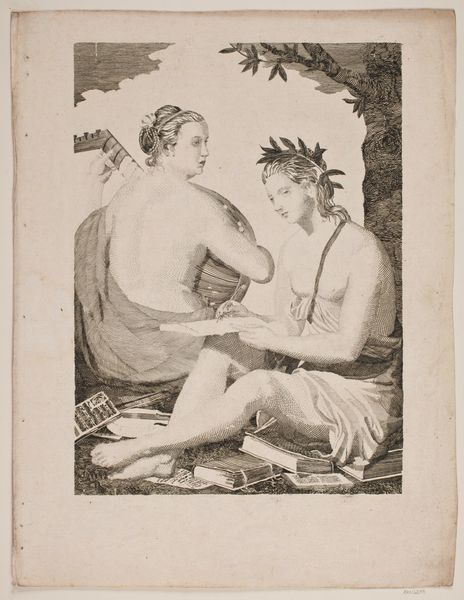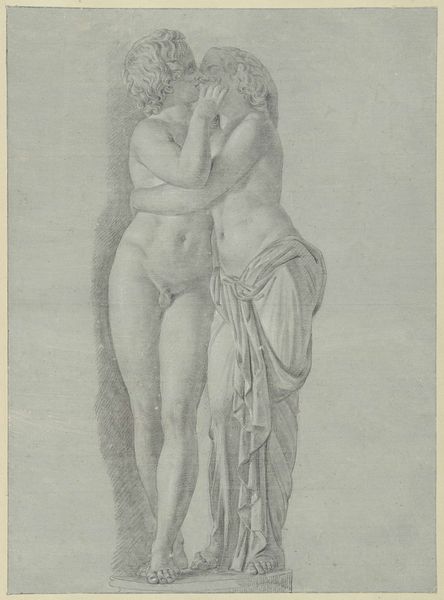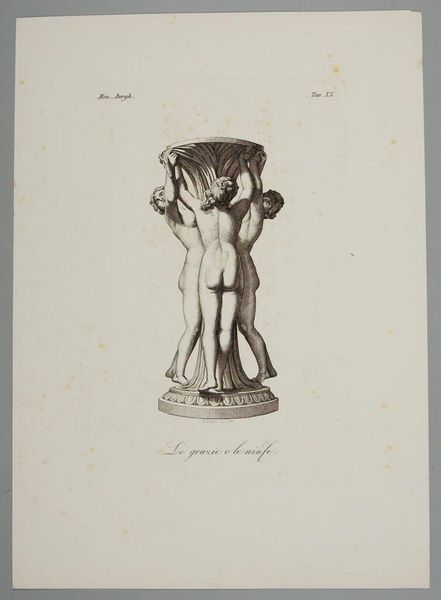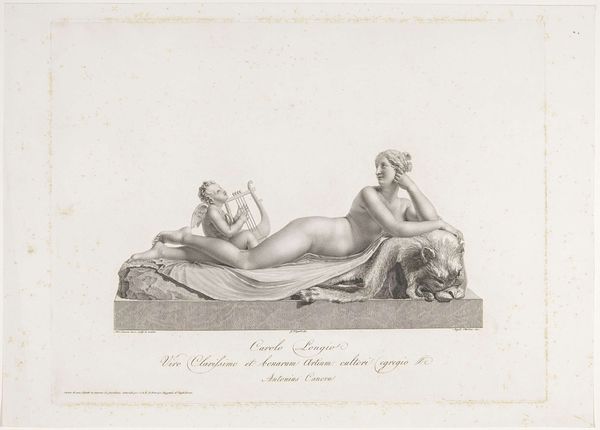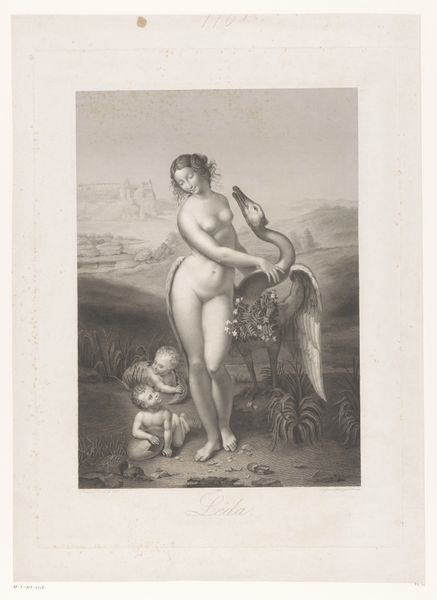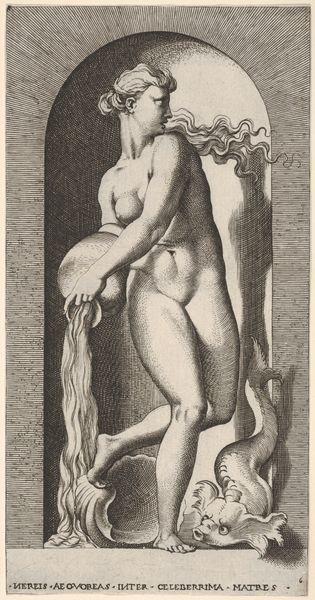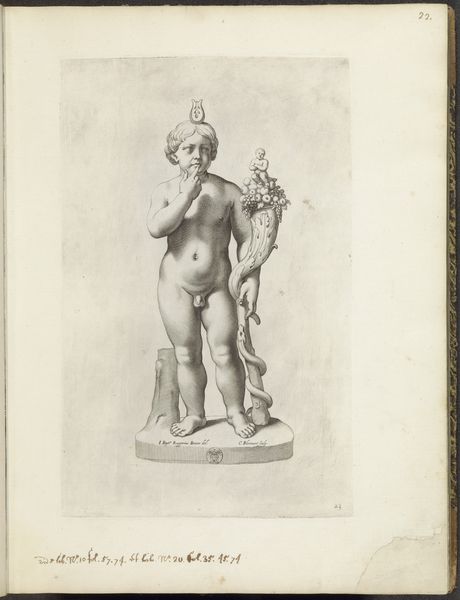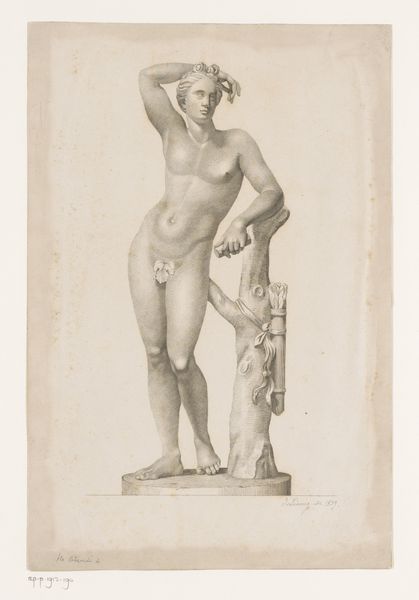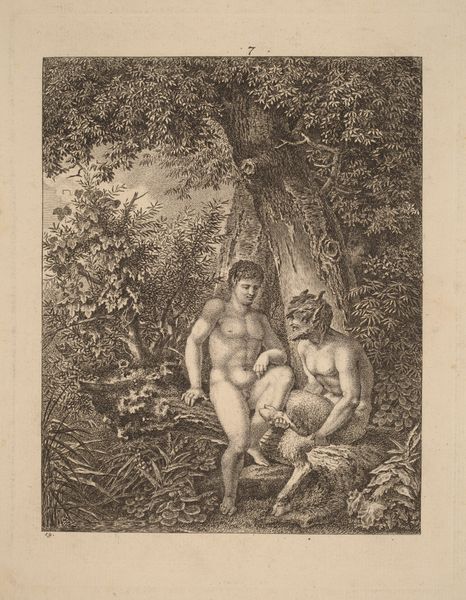
print, engraving
# print
#
figuration
#
history-painting
#
academic-art
#
nude
#
engraving
Dimensions: 232 mm (height) x 179 mm (width) (bladmaal)
Curator: So, what do you see when you look at this engraving of Jerichaus Adam og Eva? It was produced sometime between 1847 and 1938, attributed to F. Hendriksen. Editor: Immediately, I notice this almost eerie stillness. They’re in repose, but it's not peaceful. More like a before-the-storm kind of quiet. There's a latent tension in their stances, and the cross-hatching emphasizes that feeling for me. What about you? Curator: You nailed it. It’s charged, isn't it? What strikes me is how, despite the figures being classical and idealized, the story being depicted—the first humans, wrestling with newfound consciousness—always feels contemporary. The use of light and shadow creates so much volume. It’s like they’re right here with us. Editor: Absolutely, and their ‘nudity’ shouldn't be separated from its function to naturalize white, European beauty standards that historically disavow other bodies. The scene suggests vulnerability, yet there’s a calculated self-awareness about them, this inherent power, which becomes problematic when positioned as universally human, without interrogation. Curator: Hmm, that is an important point! Their stillness is so… well-posed. Like they know they’re being watched. I think the composition, even with all the shadow work, lacks some... mystery, maybe? Although it successfully communicates this feeling of being ‘on the edge’. Editor: And it should push us to ask ourselves why the myth of the Fall and ideas of innocence/experience are perpetually invoked in ways that reproduce normative notions of identity, gender, knowledge… This isn’t simply art. It actively creates meaning and constructs knowledge. Curator: I agree completely, and it's important for viewers today to recognize that and grapple with the visual languages that surround us. Editor: For sure! That the narratives are always being molded… art isn't innocent, and engaging it actively with critical eyes gives it fresh perspectives. Curator: Precisely. Art like this calls to be reflected on and interpreted continuously. It will never look the same to anyone.
Comments
No comments
Be the first to comment and join the conversation on the ultimate creative platform.
